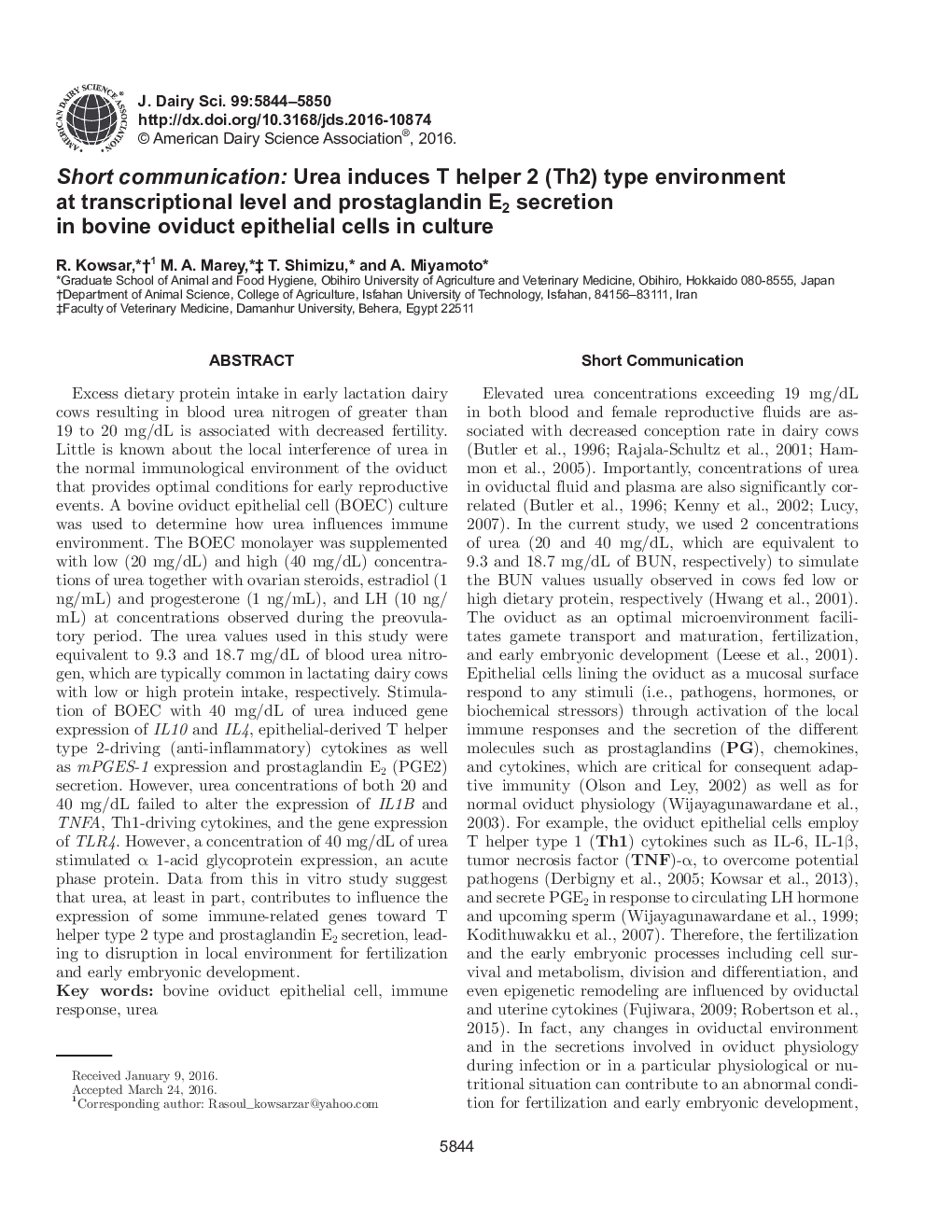| Article ID | Journal | Published Year | Pages | File Type |
|---|---|---|---|---|
| 10973680 | Journal of Dairy Science | 2016 | 7 Pages |
Abstract
Excess dietary protein intake in early lactation dairy cows resulting in blood urea nitrogen of greater than 19 to 20 mg/dL is associated with decreased fertility. Little is known about the local interference of urea in the normal immunological environment of the oviduct that provides optimal conditions for early reproductive events. A bovine oviduct epithelial cell (BOEC) culture was used to determine how urea influences immune environment. The BOEC monolayer was supplemented with low (20 mg/dL) and high (40 mg/dL) concentrations of urea together with ovarian steroids, estradiol (1 ng/mL) and progesterone (1 ng/mL), and LH (10 ng/mL) at concentrations observed during the preovulatory period. The urea values used in this study were equivalent to 9.3 and 18.7 mg/dL of blood urea nitrogen, which are typically common in lactating dairy cows with low or high protein intake, respectively. Stimulation of BOEC with 40 mg/dL of urea induced gene expression of IL10 and IL4, epithelial-derived T helper type 2-driving (anti-inflammatory) cytokines as well as mPGES-1 expression and prostaglandin E2 (PGE2) secretion. However, urea concentrations of both 20 and 40 mg/dL failed to alter the expression of IL1B and TNFA, Th1-driving cytokines, and the gene expression of TLR4. However, a concentration of 40 mg/dL of urea stimulated α 1-acid glycoprotein expression, an acute phase protein. Data from this in vitro study suggest that urea, at least in part, contributes to influence the expression of some immune-related genes toward T helper type 2 type and prostaglandin E2 secretion, leading to disruption in local environment for fertilization and early embryonic development.
Keywords
Related Topics
Life Sciences
Agricultural and Biological Sciences
Animal Science and Zoology
Authors
R. Kowsar, M.A. Marey, T. Shimizu, A. Miyamoto,
